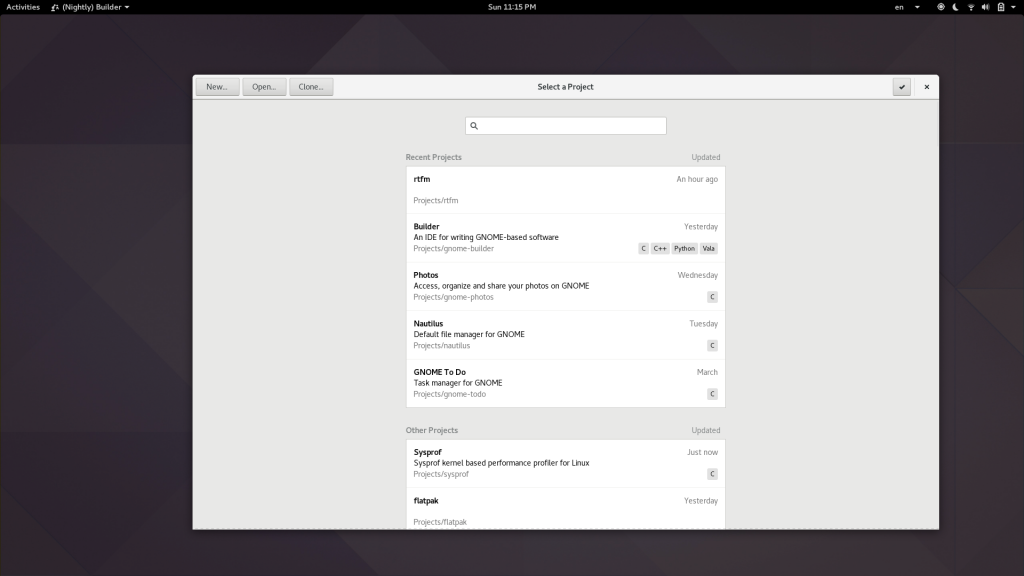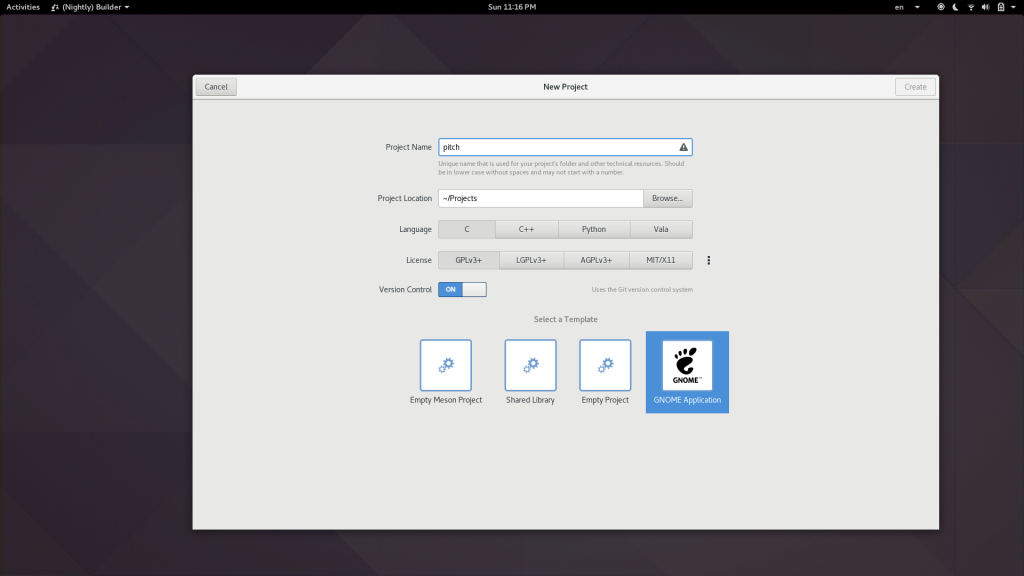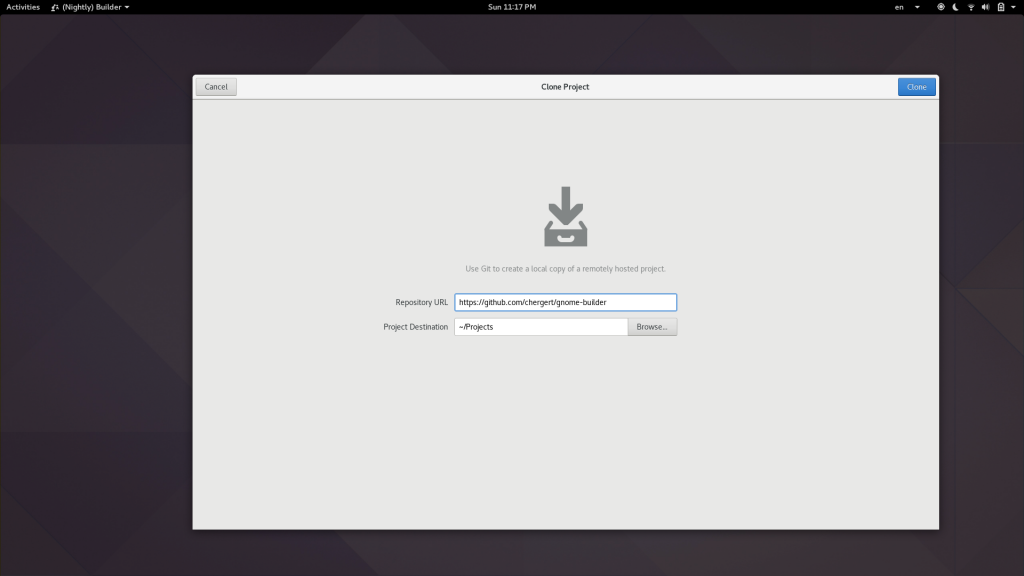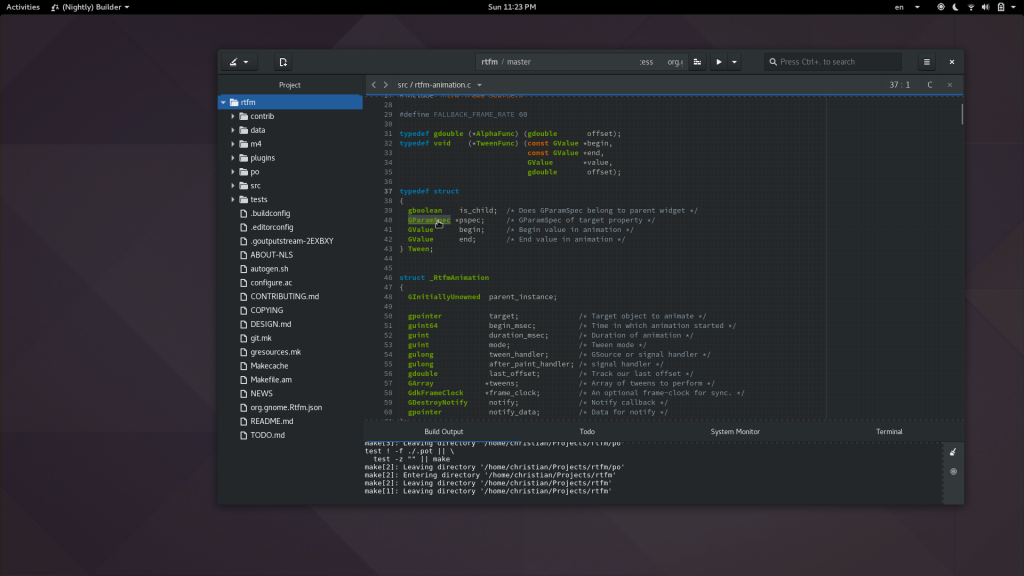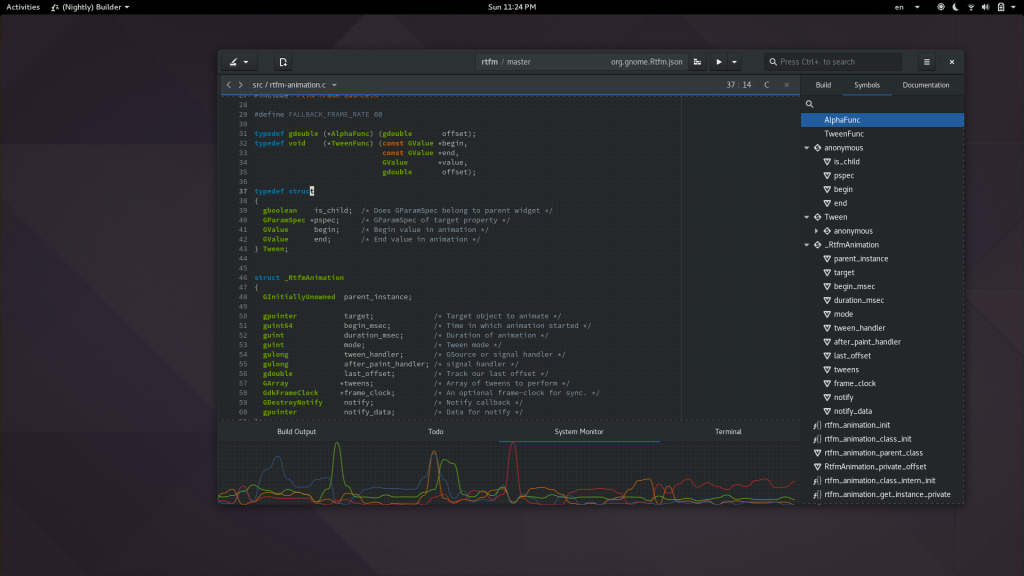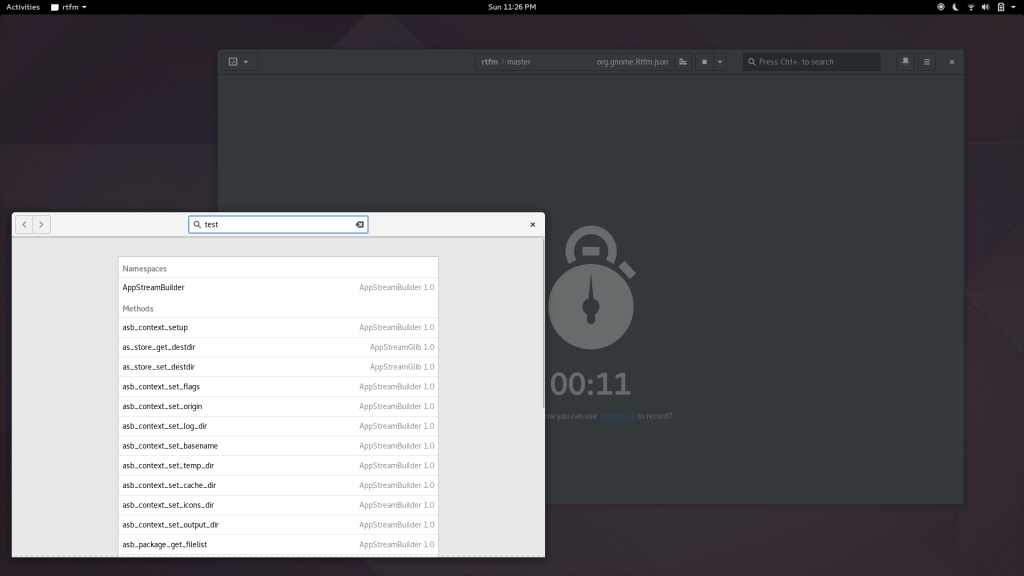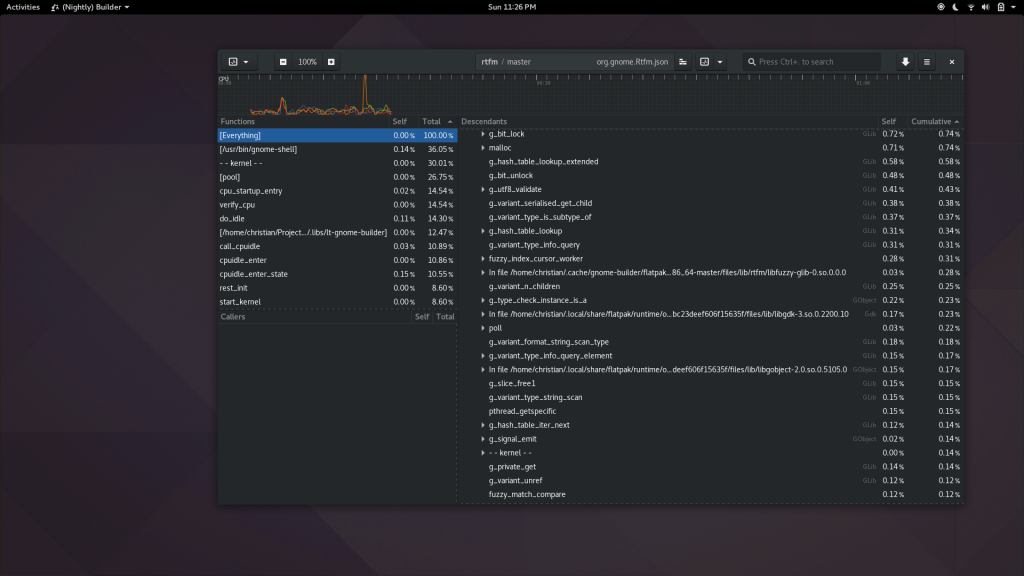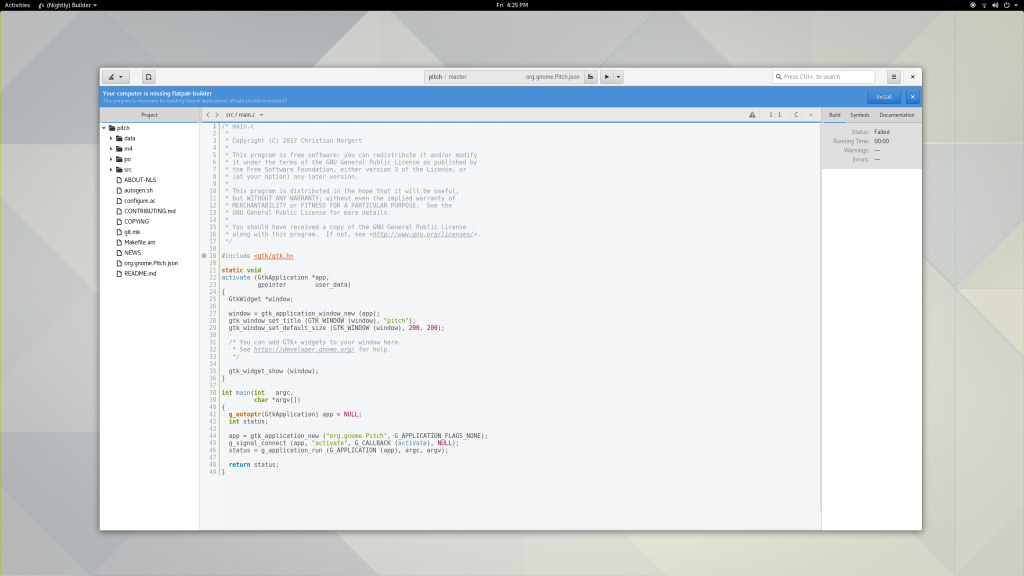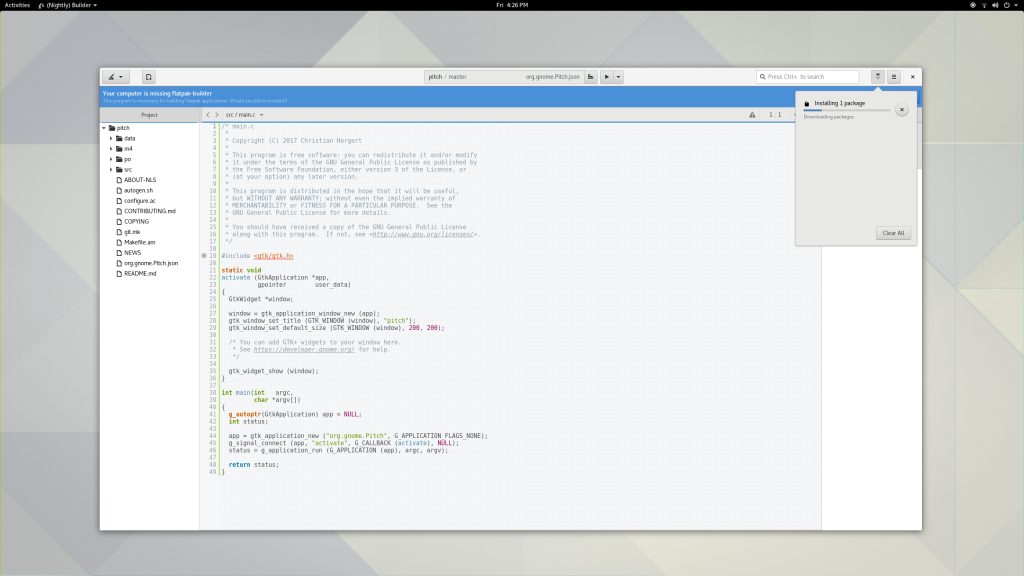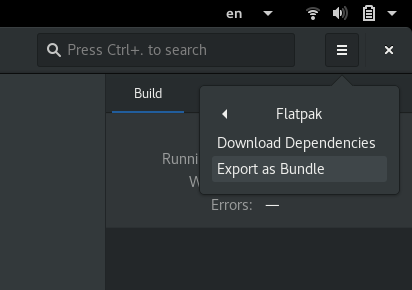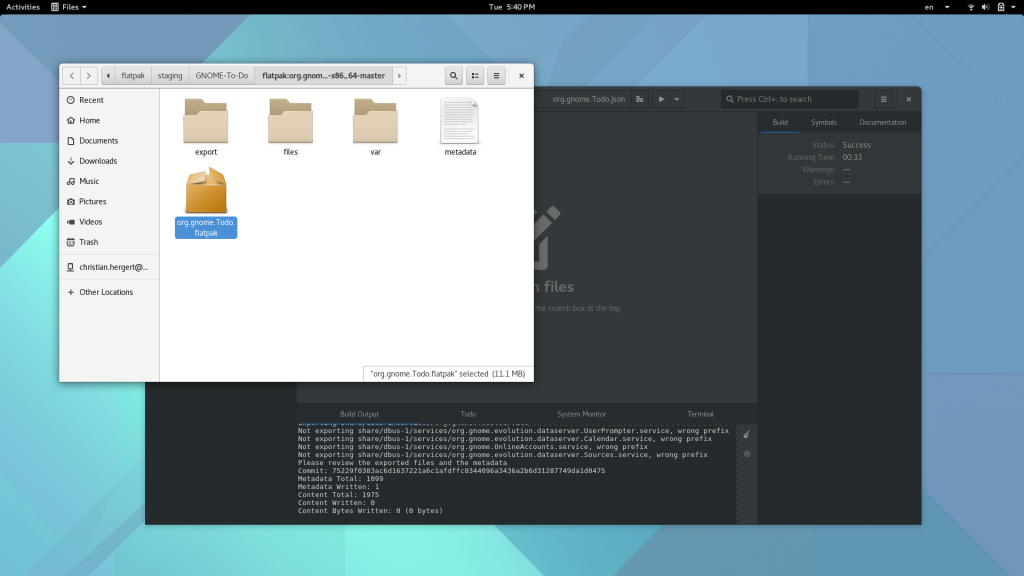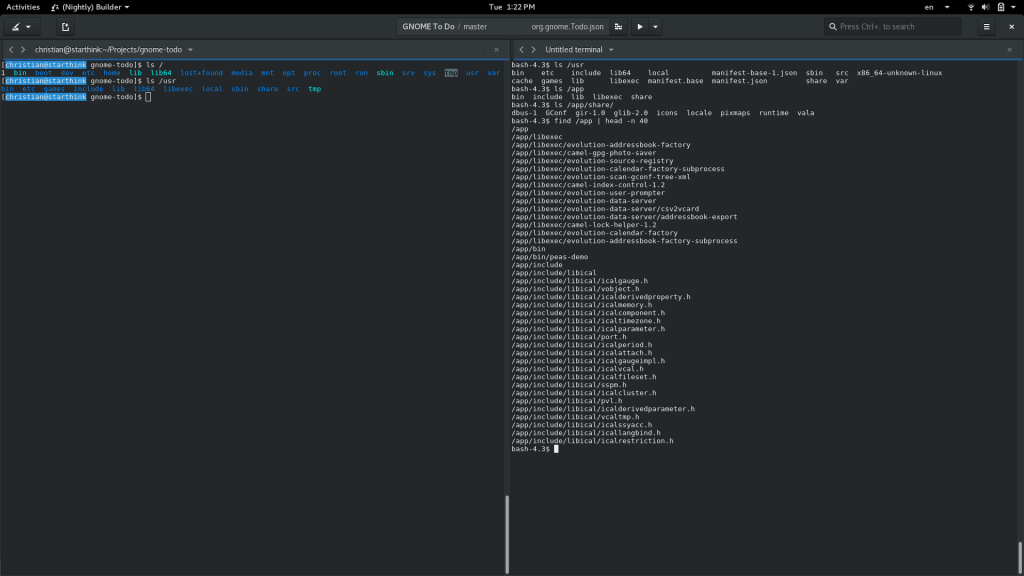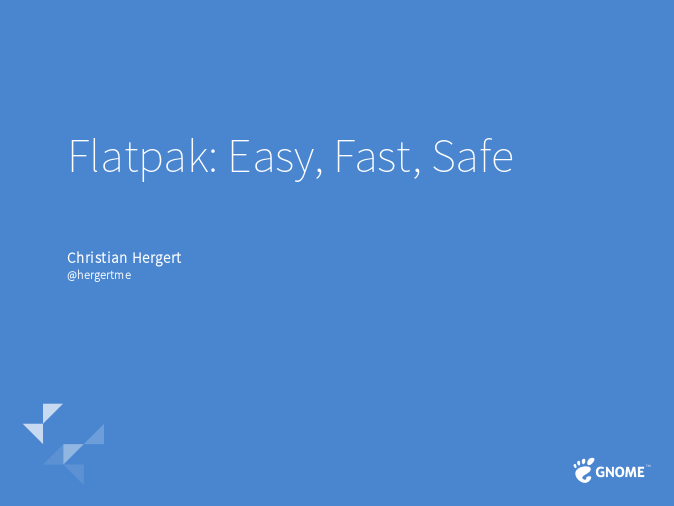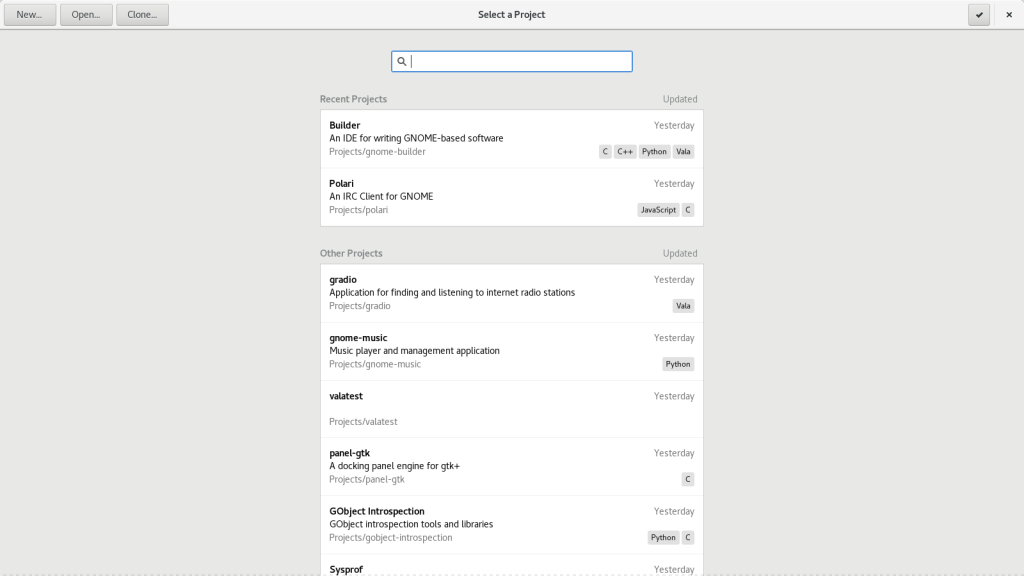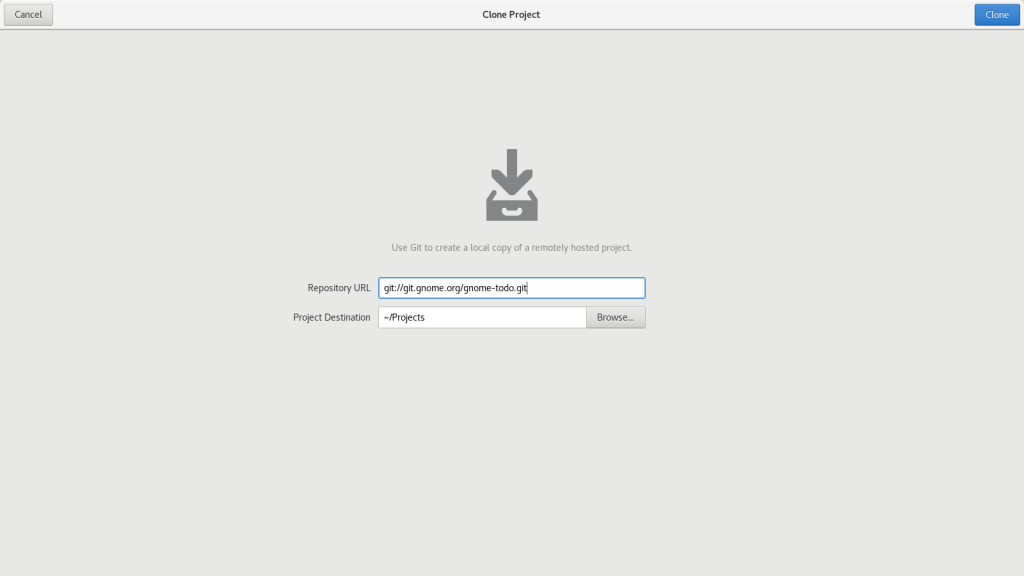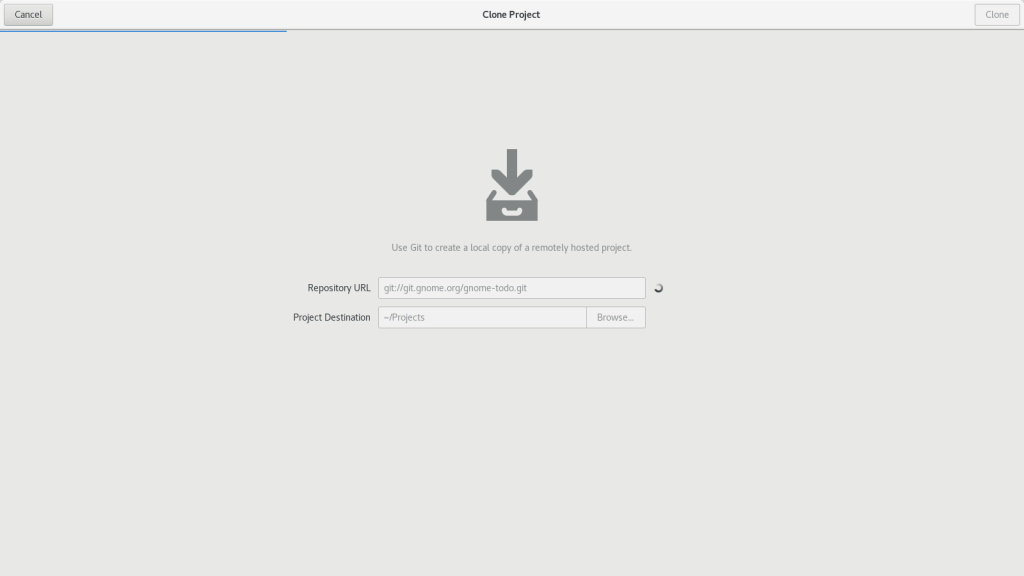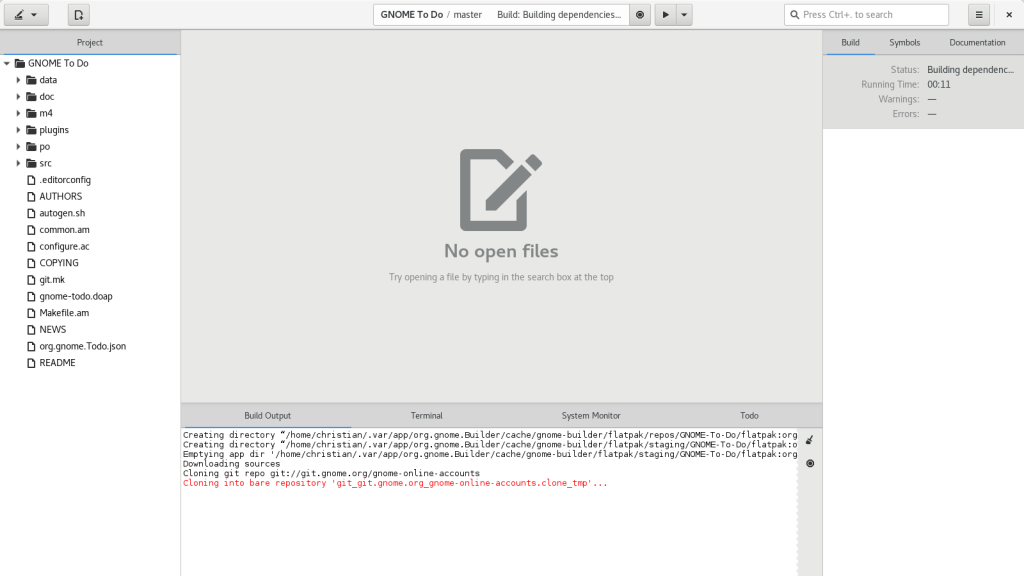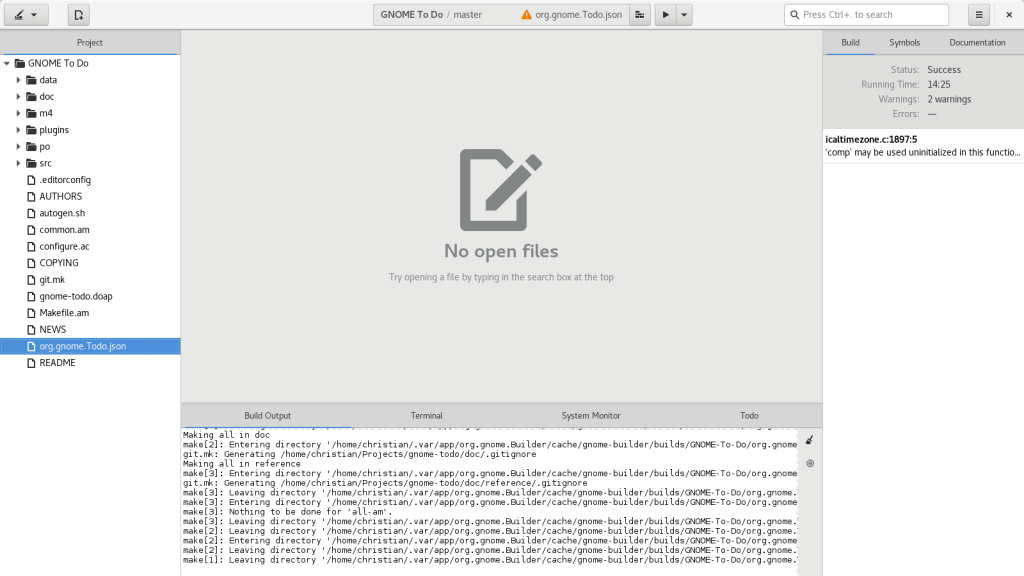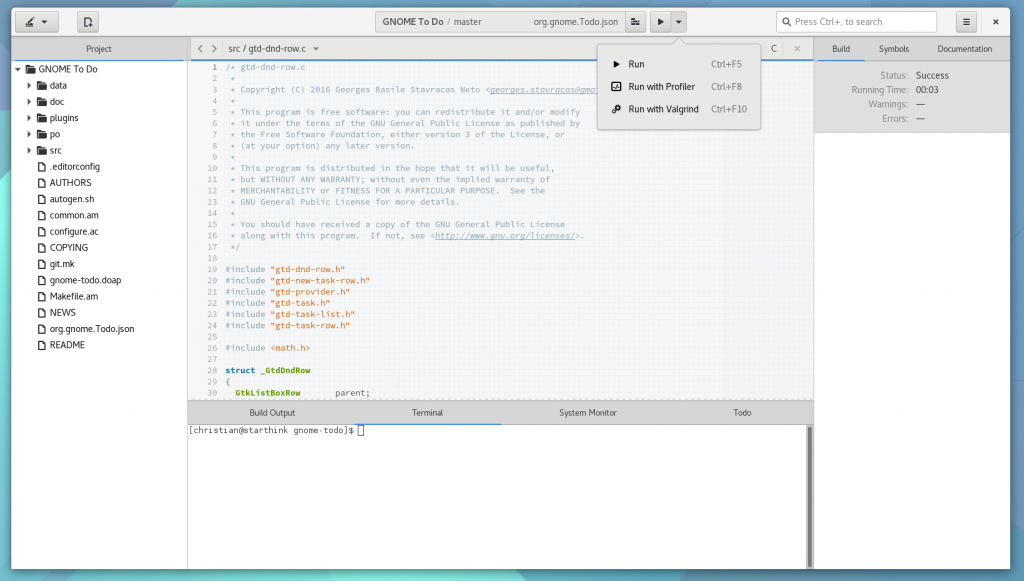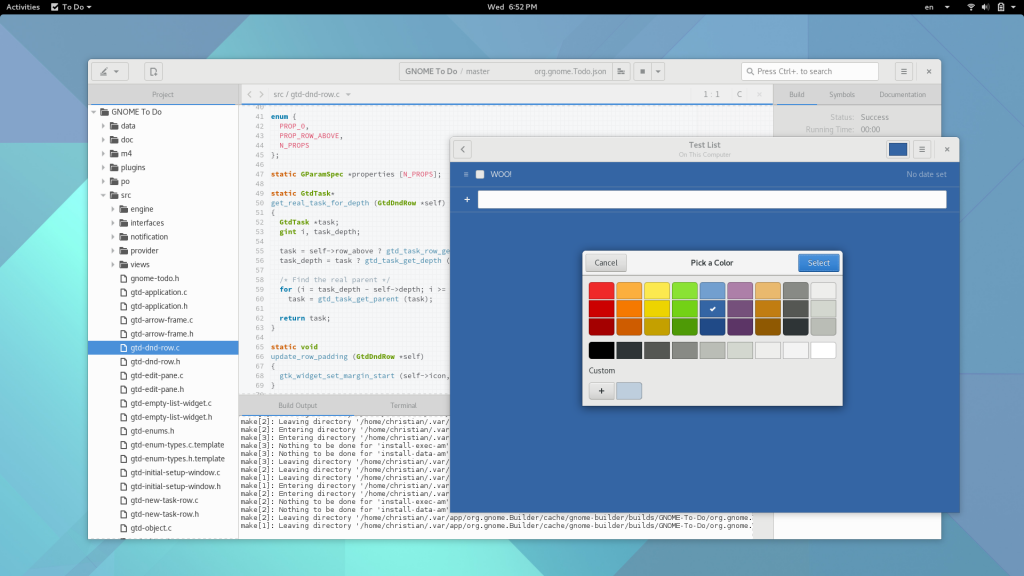Today is day 3 of the GNOME+Rust hackfest in Mexico City at the beautiful new Red Hat office. We’ve been working on all sorts of stuff since we were graced with the presence of a few Rust hackers from Mozilla Research.

In particular, Niko and Federico have been working on a GObject plugin for Rust that allows us to have a nice, almost Vala-esque, syntax for writing GObjects. It’s pretty exciting to watch a compiler hacker at work. After lots of talks about GObject design internals, performance hacks, re-entrancy protections, and more, I think we’re headed down a solid path to enabling our Object Oriented style of development, but from Rust.
In addition to playing the code historian, I spent some time trying to get Builder’s support for the Rust Language Server up to snuff. It’s still a bit annoying to get rls installed¹, but it sounds like RustUp will support it soon which means we can make it seamless. Anyway, I fixed a bunch of little bugs that cropped up in the recent months as both Builder and rls projects churned like crazy.
I also implemented support for “Find all References” last night. In a Rust document, just Constrol+Shift+Space to get the list of references, followed by up/down, and return to jump. I’d like the IdeSymbolResolver’s for Clang and Vala to support this soon too.
¹ To install rls, start by installing the nightly toolchain from Builder’s Preferences → SDKs. If you’ve not done this before, you’ll need to first click the “Install” button for RustUp. Then add a new Rust Toolchain called “nightly” and set it as the default. Clone the rls repository and run ~/.cargo/bin/cargo install from within that project. The good news is we should be able to simplify this quite a bit in the near future.
